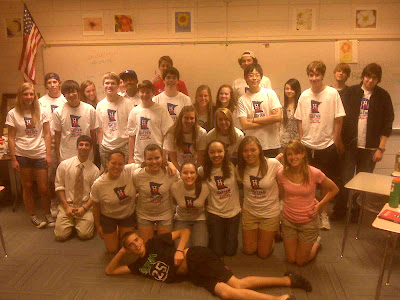Individual Persuasive Letter Based on ResearchAssignment:To demonstrate your understanding of the research process and to engage in a thoughtful analysis of a meaningful contemporary issue, you will write a letter to a publication, person, corporation or organization that persuades them on a specific ethical issue. For your research, examine a contemporary ethical issue tied to current corporate and consumer practices. Although you may research and write about a food-related issue, do not write about the same topic that your group did after watching Food Inc.
Letter Paragraph Organization:Your persuasive letter paragraphs do not need to follow the PIE format of literary analysis. In fact, business letters are brief, rarely do they go beyond one page of single-spaced type.
Click here to see a business letter format for typing.
Your letter should follow this organizational plan:
• Introduction—creative attention device and specific ethical thesis—the point you want to prove. (2 sentences)
• The basic arguments on both sides of the ethical question. Consider the consequences, pros and cons of each position. You may need to include some brief background information. Information in these paragraphs will be supported with in-text citations. Using “according to” or other signal phrases works well in a business letter; however, you may use parenthetical, in-text citations. (2 – 3 paragraphs)
• Conclusion—Based on your research, what is the best ethical response to your issue? In other words, what’s your call to action? What do you want people to do? Why? (1-2 sentences)
Note Taking:Complete some type of note-taking that ensures you are properly paraphrasing and correctly using direct quotations so that you
do not plagiarize. Annotating printouts works well for note taking. Alternatively, you use paper or note cards to capture information without printing it. Just be careful to use quotation marks when you are copying lines exactly.
Research:As you research, remember that you must reference a minimum of three credible sources.
•
Credible web sites have a known author (usually one that can be contacted), links that work, few grammatical errors, and listed resources.
• If you use articles from the school’s on-line databases, you are assured that they are credible.
• If you use a source not from the school’s database, create a flow map that shows why you determine the source was credible. See the flow map glued in your notebook.
Final Products:1. One-page letter (typed, single spaced block formatting, 12-point font, one-inch margins)
2.
A properly formatted MLA works cited page Help Available:Remember that The Writing Center is open before school and during lunch to assist you. Also, check out the teacher’s blog for links to citing sources and formatting a business letter.
Due Date:Your letter is due on Friday, April 9; however, you will not receive late points if you turn in the paper by Monday, April 12 at 3:10 p.m.--the last day of the due date window. I will grade the papers that are turned in on Friday, April 9 before the other ones in case you want to take that into consideration when planning your due date.
